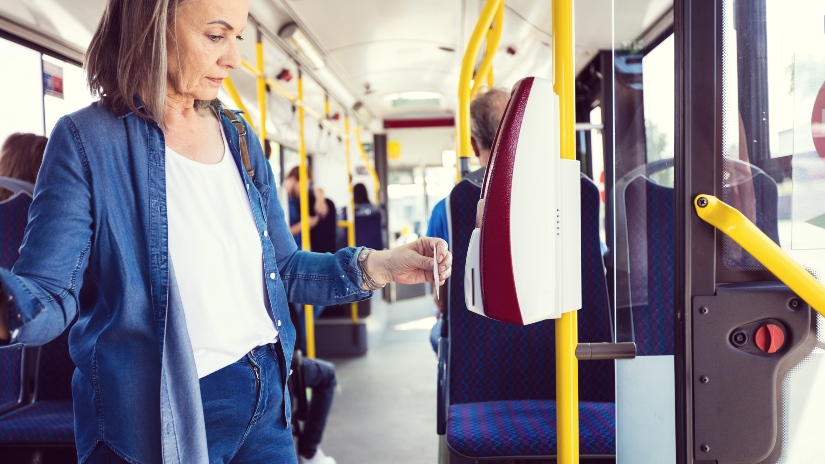By Harsha Badarinarayan Ph.D., Vice President, Hitachi America, Ltd.
President Biden has stated one of his four major goals as president is to address racism and equity in U.S. government actions. This is a holistic government focus, and in July 2021 the U.S. Department of Transportation set its first rulemaking step by asking for comments on how to identify transportation equity. Identifying what transportation equity is starts with a realization of the data that would drive identification, how that data is collected and used to improve equity, and how partnerships between government entities, private sector and public sector entities are necessary to address this issue. Hitachi’s mission to contribute to society through the development of superior, original technology and products is perfectly suited for the discussion on identifying and addressing transportation equity. This mission related to transportation equity, however, must start at the fundamental level and that means understanding data.
“We recognize how misguided investments and missed opportunities for federal transportation policies have reinforced racial and economic inequality. The wrong kind of investment can divide or isolate neighborhoods.” – DOT Secretary Pete Buttigieg to African American Mayors Association, February 2021

Generally, the public knows very little about how equitable policy, especially equitable transportation policy, is created and executed at the local level. Transportation policy is heavily informed by data, and many underserved communities are subject to barriers for participation in data collection practices. Without input from these communities, the data we use to inform our decisions about policy and transportation infrastructure becomes biased and flawed when viewed in the context of an entire population. To remedy this longstanding trend, data collectors need to thoroughly understand the communities they are surveying while also maintaining a standardized approach that allows for frequent updates as populations change. Though transportation equity is a current initiative being undertaken by the Biden Administration, there is plenty of room to facilitate Public-Private Partnerships (PPP). The private sector’s ability to finance large projects with peak efficiency will allow for hugely impactful data-gathering technologies to be used to make transportation more accessible, affordable, and efficient.
Fundamental in a discussion of any data-gathering project is the issue of a responsible, standardized method by which our goals can be accomplished. It is no secret that more data allows governments and private sector actors to tailor solutions to the demands of its consumers. That said, the establishment of a consistent, extensive, and pre-agreed upon set of rules will limit potential data collection abuses. These standards apply to both the public and private sectors. The key moving forward will be deciding how to reconcile the need for extensive data collection with consumer privacy. Consumers will likely always be worried how their personal information is utilized by companies and governments alike, but providing a neutral intermediary organization to manage data in conjunction with bolstered collection standards may go a long way in instilling trust with the general public.

It has been well established that data collection is a necessary tool for improving transportation equity in underserved communities. However, the sources of our data present a host of problems as well. Data collection can be done seamlessly by utilizing mobile devices (i.e. cell phones), but generally, these devices may only yield a portion of the population’s data. For lower-income individuals, smartphones or tablets are likely not as prevalent when compared to more affluent communities. Because of this, ride-sharing apps or micro-mobility infrastructure data may only show us a sliver of some populations and completely exclude others. For example, existing data tells us that nearly 10 percent of the U.S. population would be barred from the usage of micro-mobility infrastructure as a result of some form of disability. Furthermore, 8 percent of U.S. households exist without a bank account, which would render the oft-utilized pay-as-you-go crediting system useless. Bias will be present in nearly every form of data collection, but taking the time to examine data from underserved communities at the granular level may go a long way toward solving the issues of transportation equity that plague us today. Even if the scrutiny of data from certain communities must increase to deliver services, there could be built-in safeguards against data abuse, such as time constraints that limit the number of times governments, companies, or third-party actors can access certain kinds of data or personal information.
It is important to note that transportation equity can affect underserved rural and urban environments similarly. Both communities face challenges when it comes to the availability of affordable and convenient transportation. That said, the challenges that come with utilizing data to solve transportation equity problems differ from place to place. In rural environments, the implementation of advanced planning and scheduling software will optimize operations and provide service to individuals in a more convenient fashion. Furthermore, utilizing historical data to forecast demand will allow transportation policy practitioners to create a more efficient and effective environment rather than through a total reconsideration of the system itself.

A major question for companies like Hitachi moving forward is what our influence will be. As previously noted, there are many avenues for PPP when it comes to facilitating an equitable system of transportation, but even if federal and local governments fall short, it is still possible to have a massive effect. Hitachi is positioned to partner with communities to provide individuals with innovative tech, update local transit infrastructure, and provide value through data analytics and cybersecurity initiatives. All these initiatives would be undertaken with the ultimate goal of improving the quality of life in underserved or disadvantaged communities. One consideration would be that private intervention would require an indexed measure of success (whether that be a function of the standard of living, increased wages, better academic performance, etc.). So long as there is some form of standardization when it comes to evaluating the services that companies like Hitachi can provide, the transportation ecosystem is brimming with opportunity for collaboration between communities and the private sector.
When the data is available, putting it to work to see the possibilities and create new societal benefits is the next stage of the process. The next segment explores the technical challenges of putting the data to use, how data privacy, data collection, and algorithmic bias impact the pursuit, and solutions to address these challenges.

Vice President, Hitachi America, Ltd.
Harsha Badarinarayan is the Vice President of Research and Development at Hitachi America, Ltd. He has been with Hitachi for over 18 years. In his current role, Harsha is involved in Technology Strategy & Planning for automotive business expansion in the U.S., specifically related to the Autonomous Vehicles & Connected Mobility. His work focuses on developing automated driving technology and identifying potential go-to-market (GTM) opportunities for automotive-related use cases. Harsha holds 15 U.S. patents and has authored or co-authored over 30 technical publications.